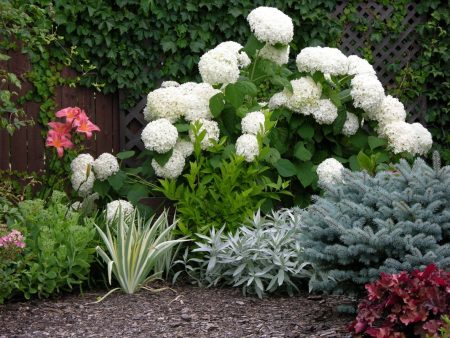 Ornamental shrub that can delight the eyes of any person, even if he is not engaged in flower breeding. However, it is gardeners who are faced with a difficult task: sooner or later, a beautiful plant needs to be transplanted. Many people ask: is it necessary to change the place of growth at all, because the plant can die due to improper transplantation. So what needs to be done to transplant it correctly and most importantly without harm to the shrub? This question is revealed in this article.
Ornamental shrub that can delight the eyes of any person, even if he is not engaged in flower breeding. However, it is gardeners who are faced with a difficult task: sooner or later, a beautiful plant needs to be transplanted. Many people ask: is it necessary to change the place of growth at all, because the plant can die due to improper transplantation. So what needs to be done to transplant it correctly and most importantly without harm to the shrub? This question is revealed in this article.
Hydrangea is a truly unique shrub, because only it is able to multiply by dividing old bushes. In addition, it is not whimsical to the soil and grows well in various places. It seems that no problems should arise with him, because everything is so folding, but let's take it in order.
The shrub grows directly, reaches a height of about two meters. Most prefers the shadow part. He is not afraid of frosts, of course, he can’t stand the temperature minus forty, but he can definitely boast of his winter hardiness. It blooms in front of the eyes, if you use slightly acidic substrates and periodically perform mulching. First you need to determine the season for the transplant - it can be either spring or autumn. For beginners, it is still recommended to transplant hydrangea in the fall, because the spring transplant requires more preparation. The most important thing in a spring transplant is to manage to move the plant before the moment when its buds have not opened.

But nevertheless, this article is talking about how to transplant hydrangea in the fall to a new place, so let's order:
- First of all, it is necessary to organize a place where the bush will be transplanted.
- a special mixture with fertilizers should be added to the pit so that the bush does not disturb the next few years.
First you need to prepare the soil mixture, which afterwards will need to be added to the selected pits. All components are mixed in absolutely equal proportions. It is also recommended to add inorganic minerals: potassium sulfate, superphosphate, urea and humus. The nutrient mixture consists of peat, humus, leafy soil and sand. Before embarking on a transplant in the fall, do not forget to give the plant a rest and prepare for the fall, so it is best to change the place at the end of September. Absolutely any transplant creates a stressful situation for plants, and in order to survive this period, the gardener must do everything possible. But do not forget that a carefully planned process minimally damages the flower. The remaining time is quite enough for rooting the bush.

If you want to increase the number of bushes on your site, then special tricks are not necessary. When grafting, use lignified branches, prune them and save for the right time to plant in wet soil. After this, a certain amount of time will pass and the plant will give roots, which means that it will be a signal for hydrangea transplants to a new place.
If you're lucky, then magic can happen in your garden: turning pink flowers into blue. These metamorphoses indicate the presence of aluminum or iron in the soil.

In conclusion, I would like to say a few words about how to correctly and correctly combine hydrangea flowers:
- hydrangea goes well with lilacs if you plant a bush in the foreground;
- Most gardeners mix hydrangea and peonies, which allows the branches of the shrub to hold heavy buds of peonies.
Treat plants with love, and they will certainly reciprocate, awarding flowers of extraordinary beauty. And subsequent transplants seem to you sheer nonsense.
If hydrangea does not bloom next year, read here - https://enn.tomathouse.com/4/pochemu-ne-cvetet-gortenziya-chto-delat.html.




 How to propagate hydrangea in the fall: methods, cuttings
How to propagate hydrangea in the fall: methods, cuttings Hydrangea care in the fall and winter preparations
Hydrangea care in the fall and winter preparations How to feed hydrangea for lush flowering
How to feed hydrangea for lush flowering How to hide hydrangea in Siberia for wintering
How to hide hydrangea in Siberia for wintering